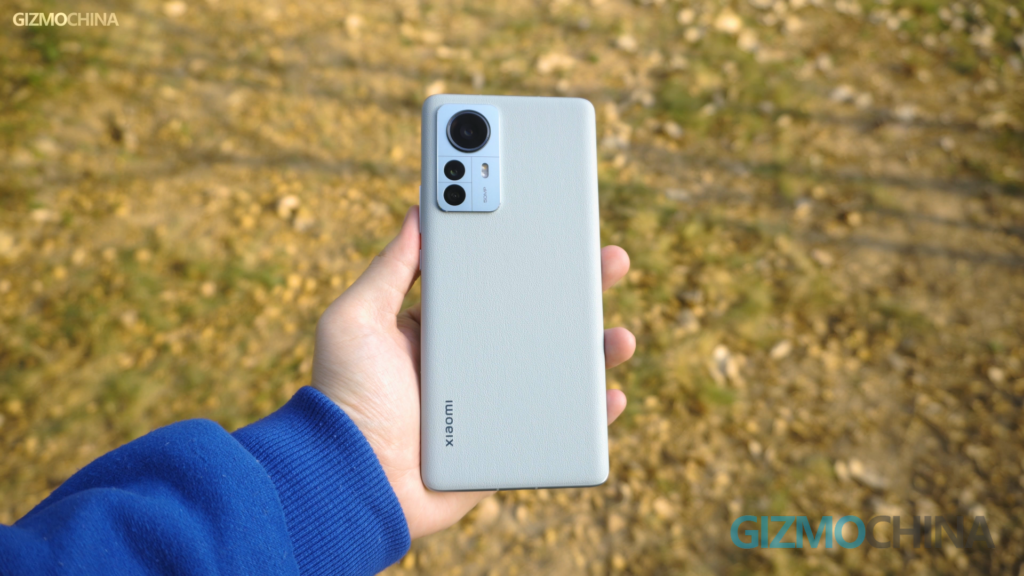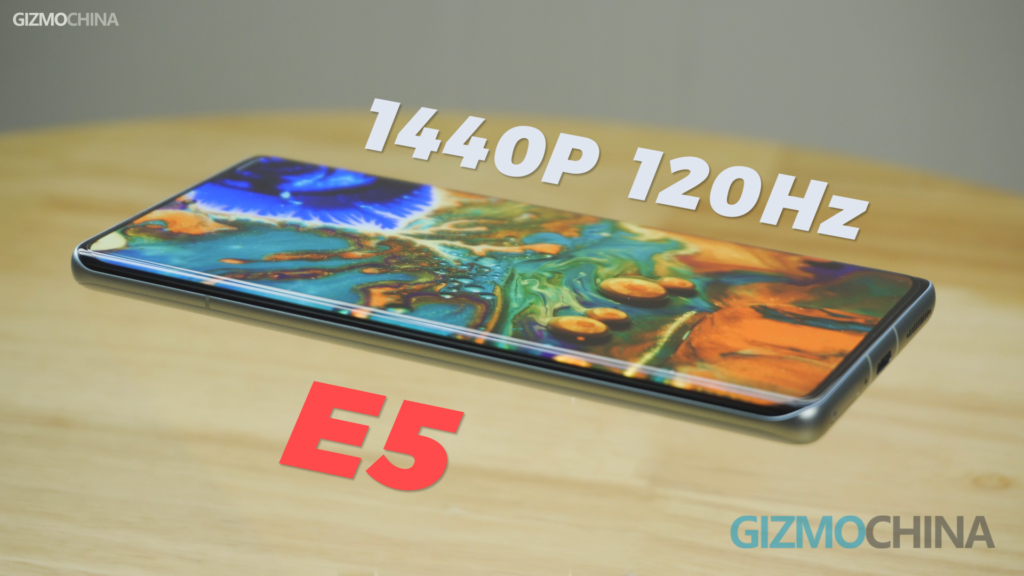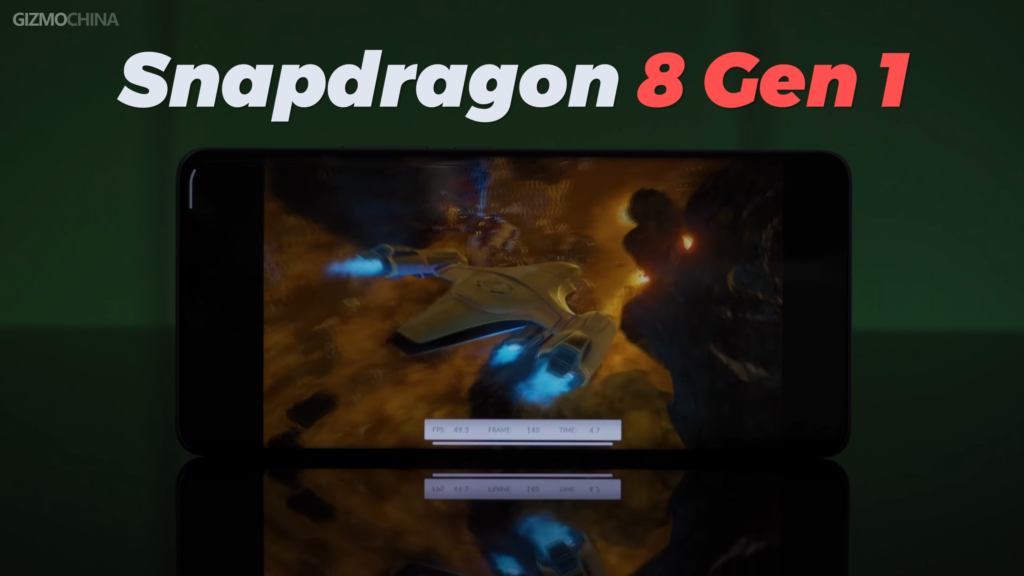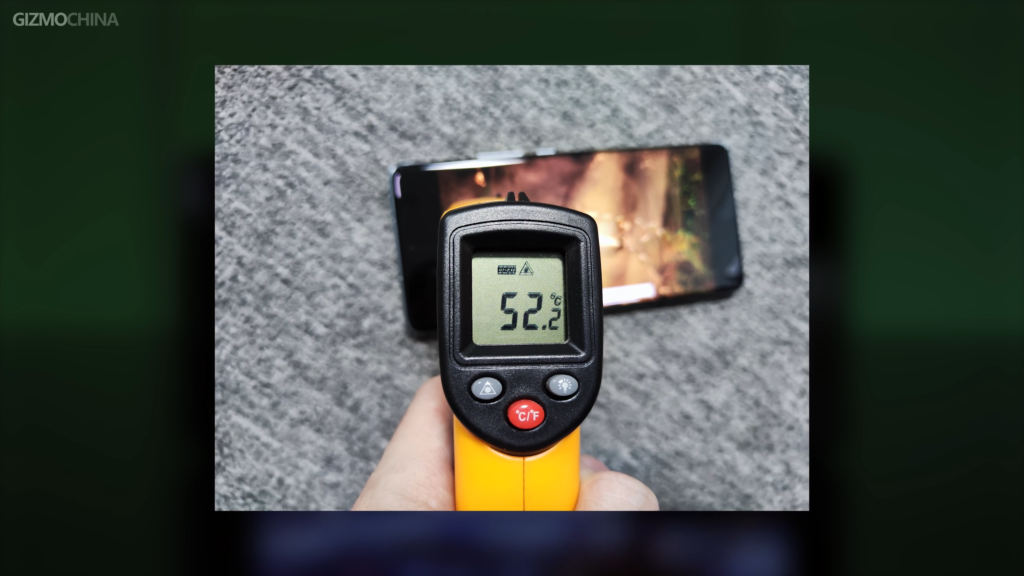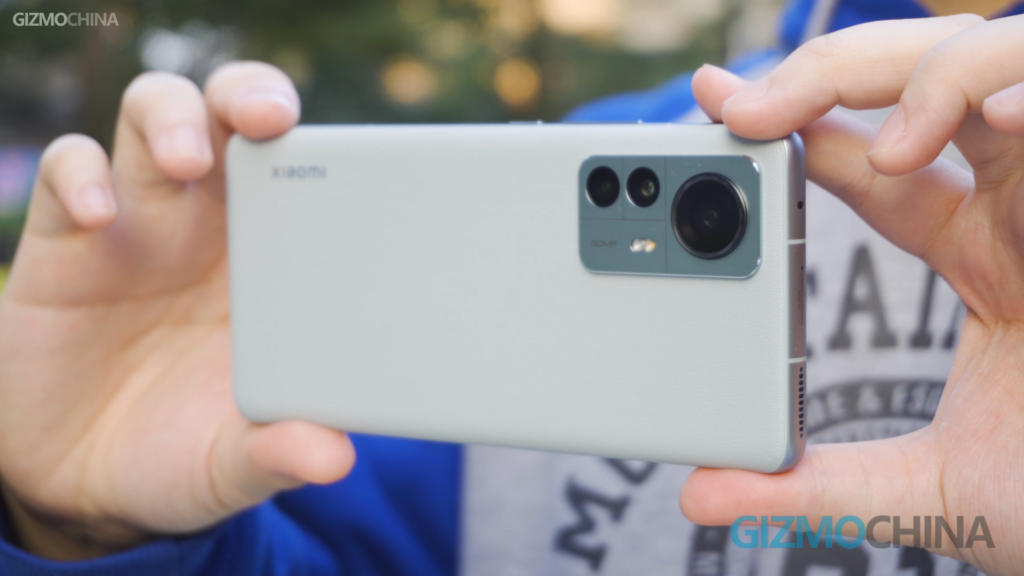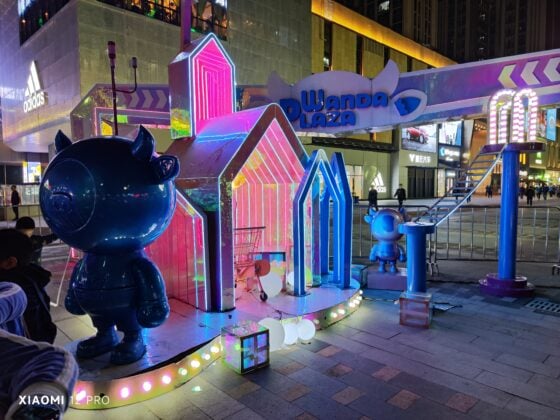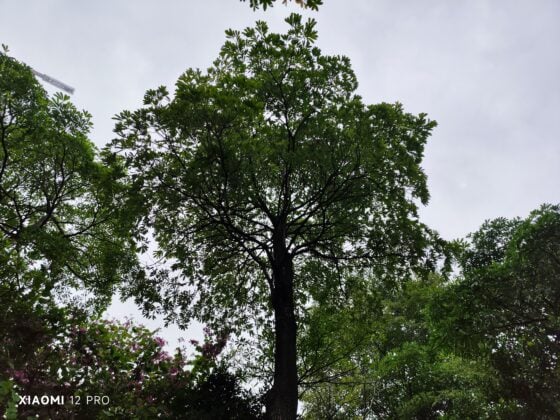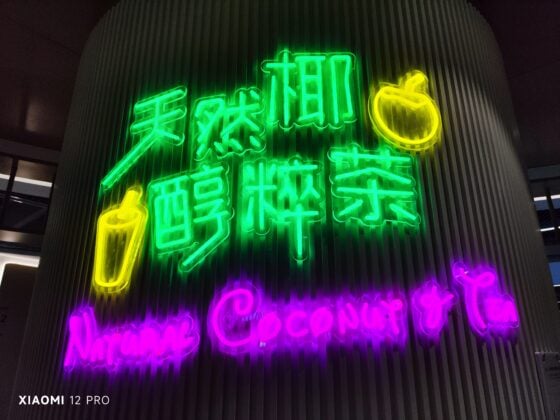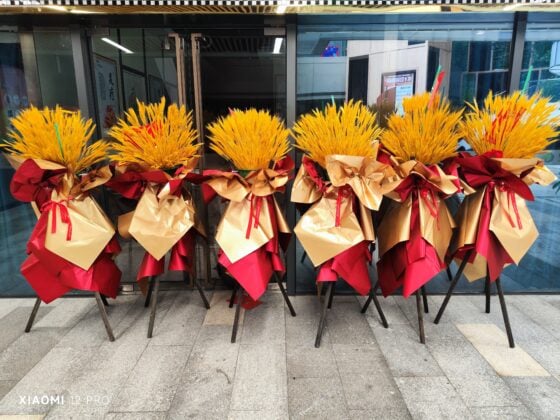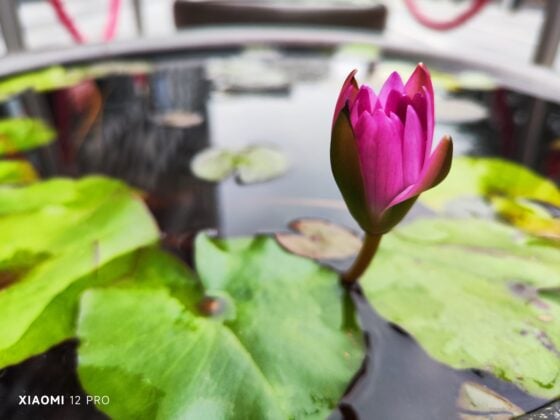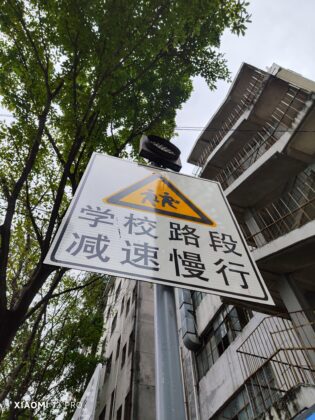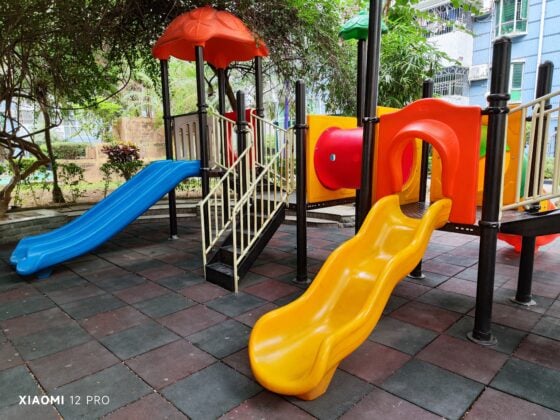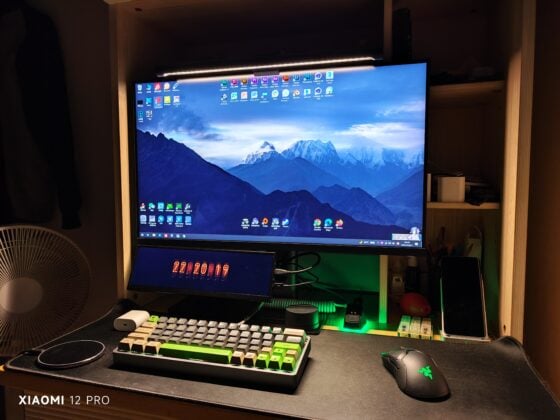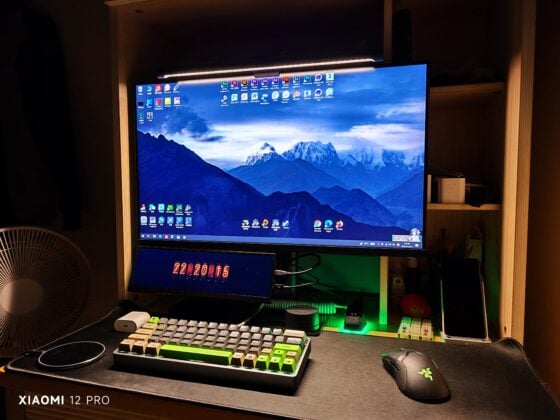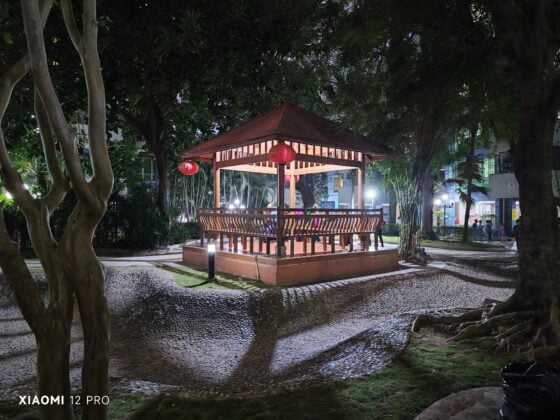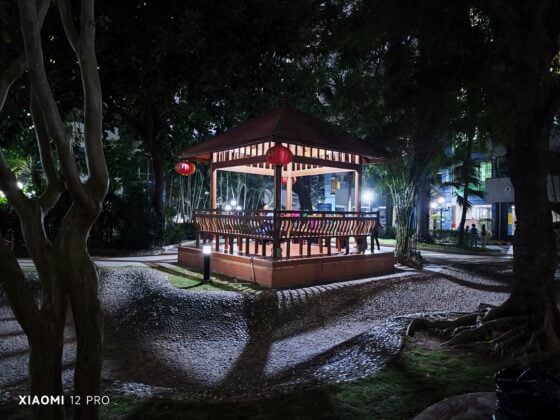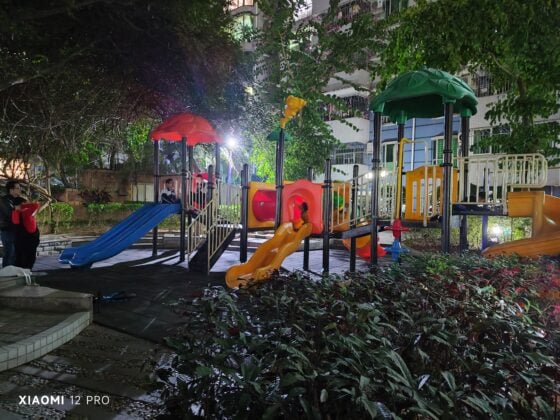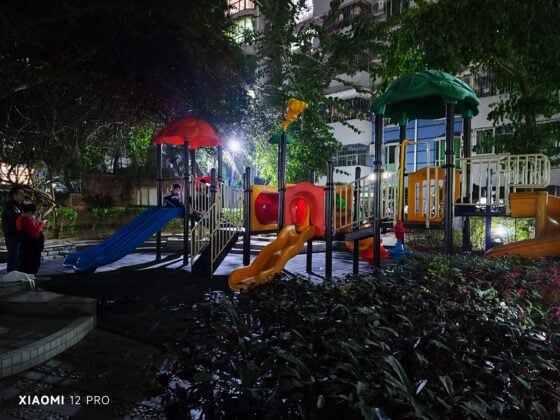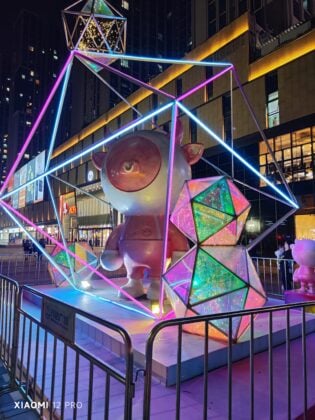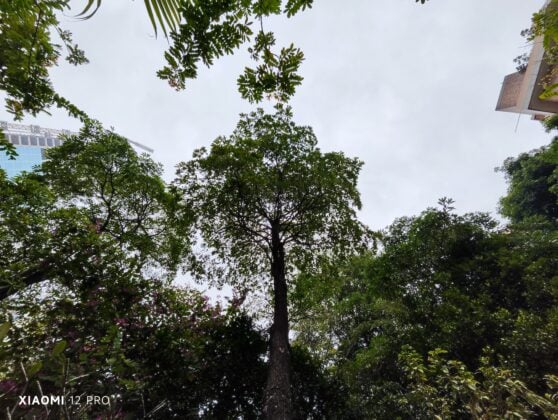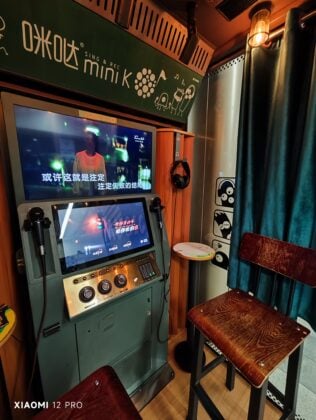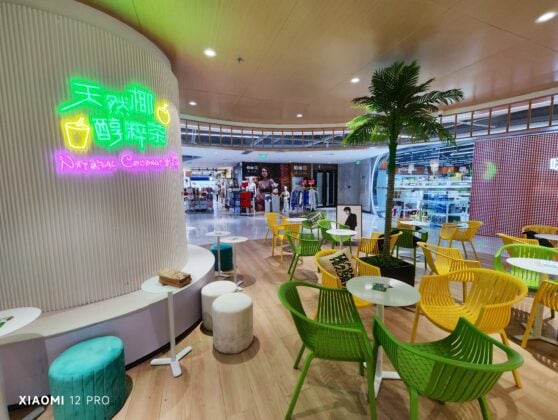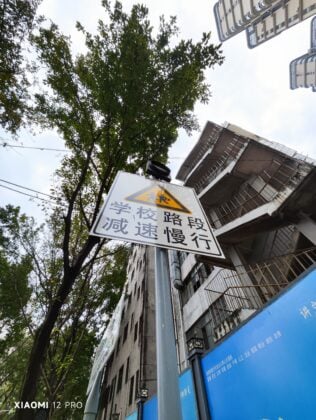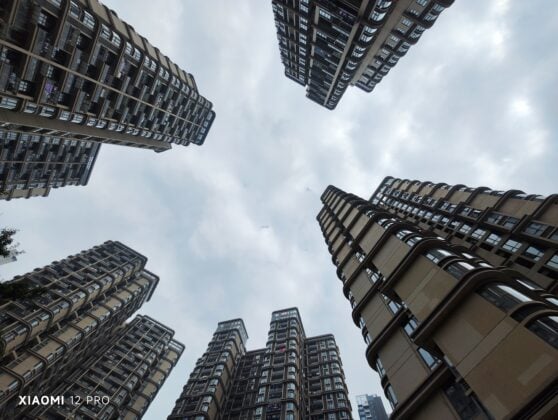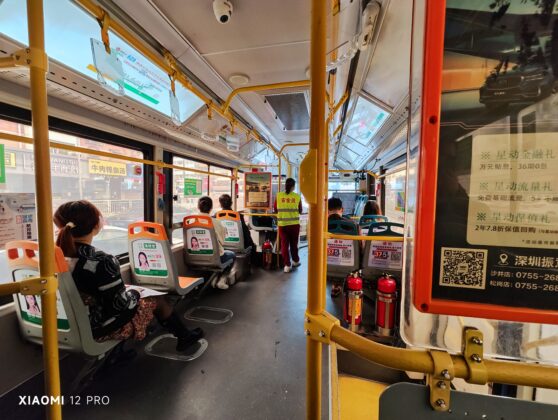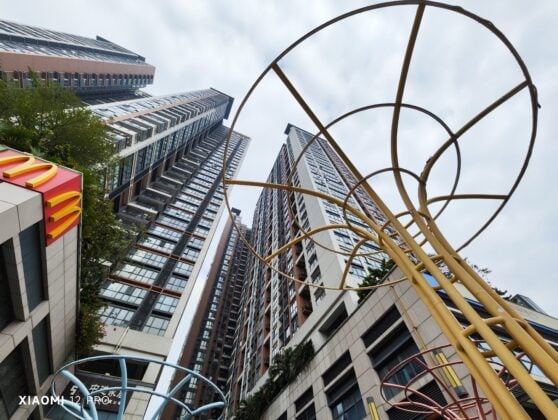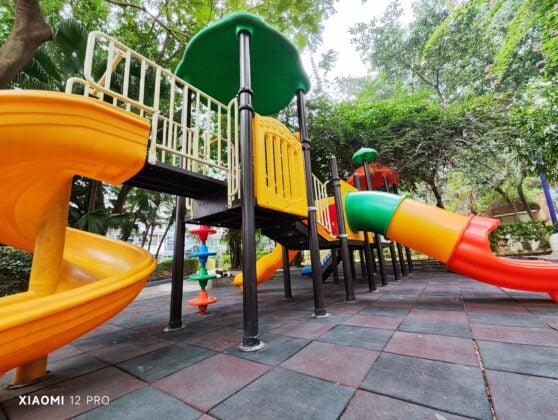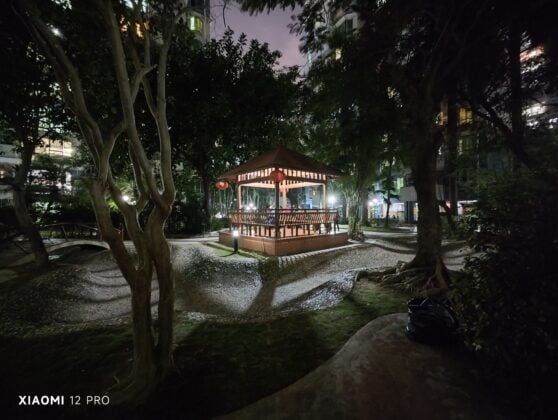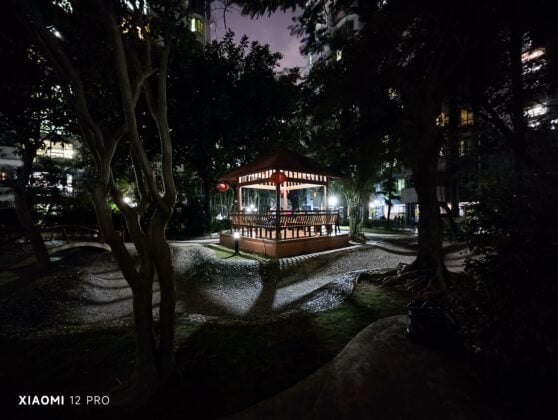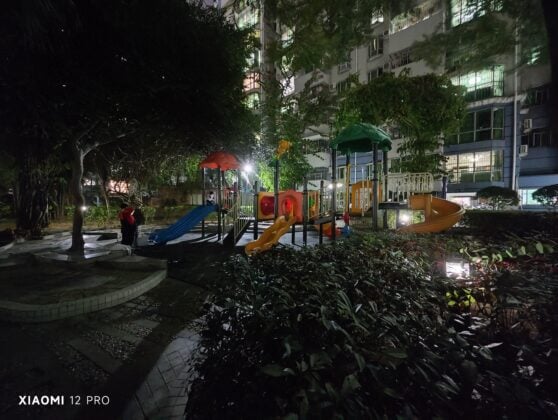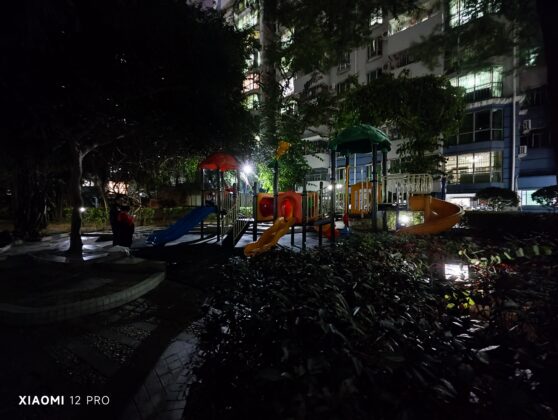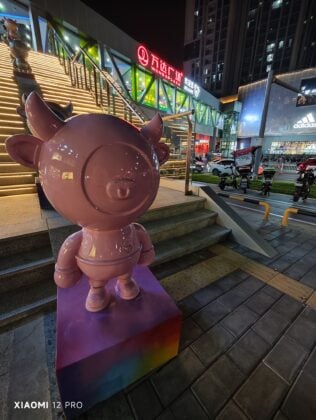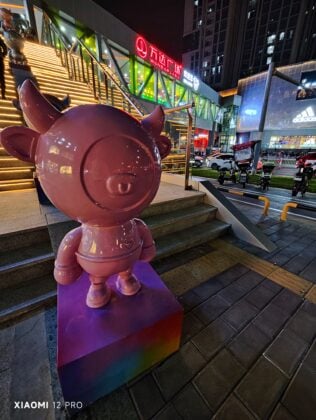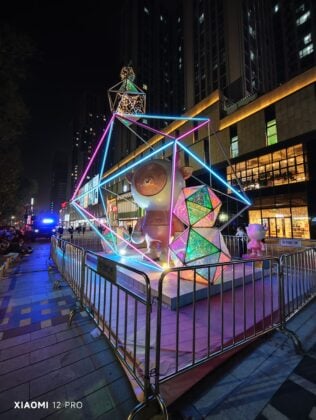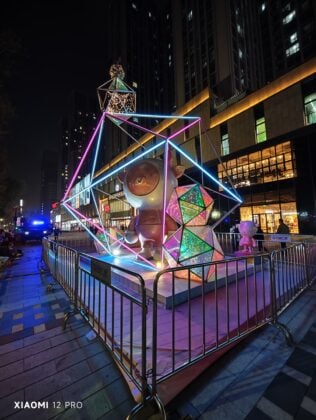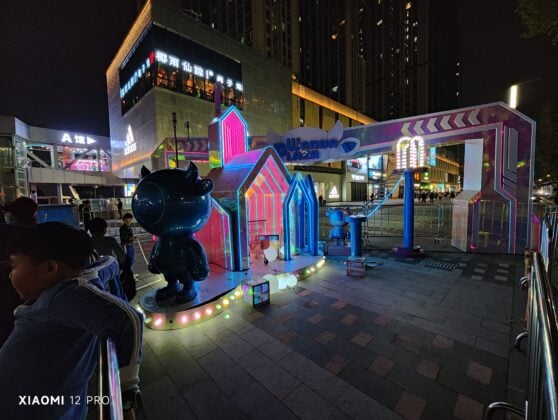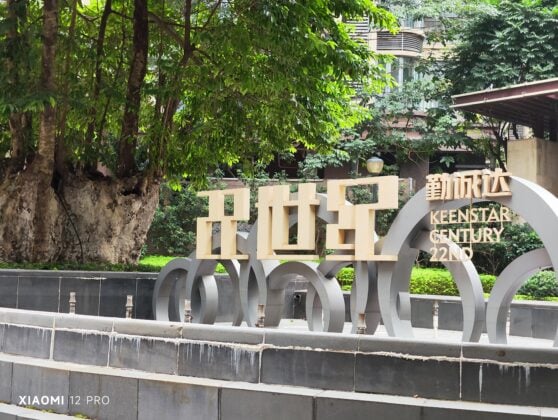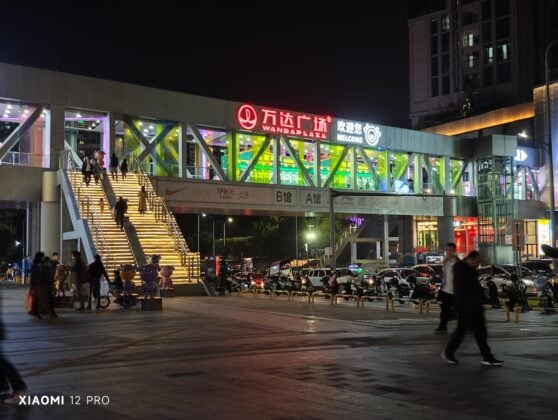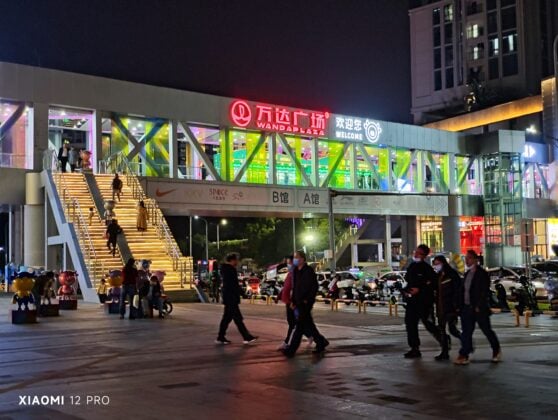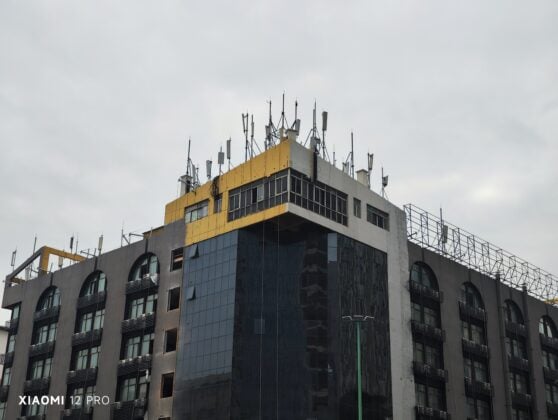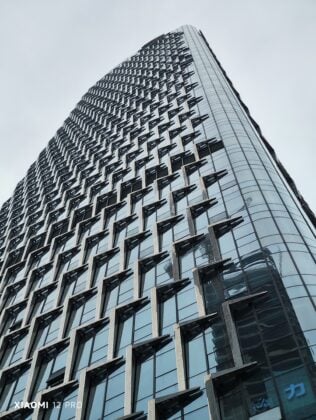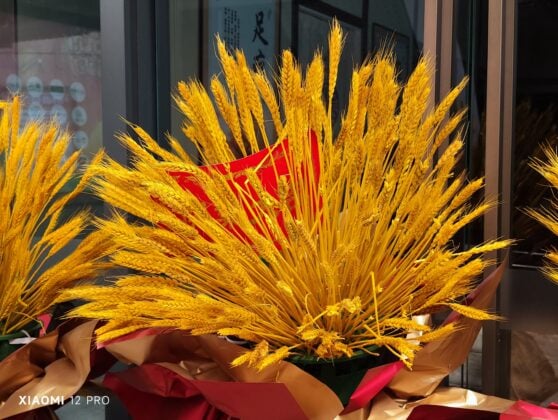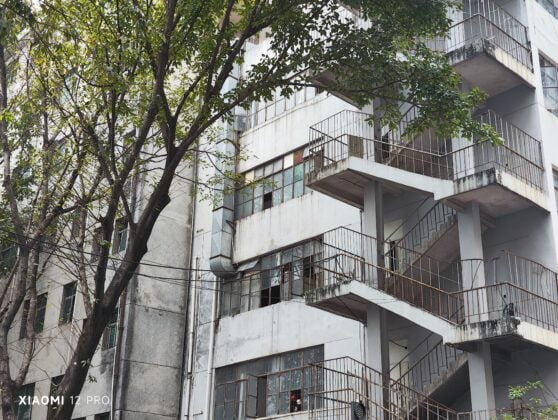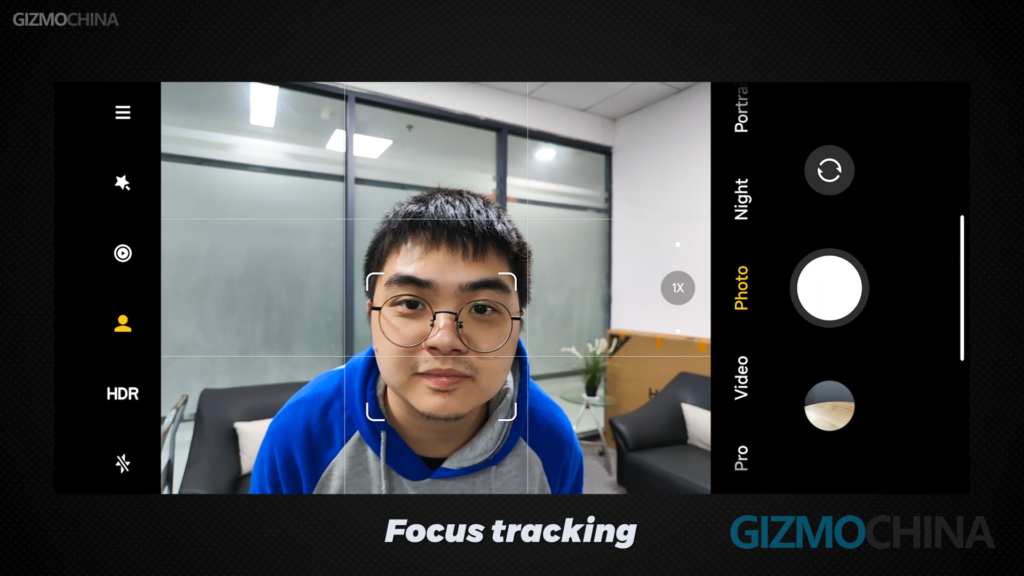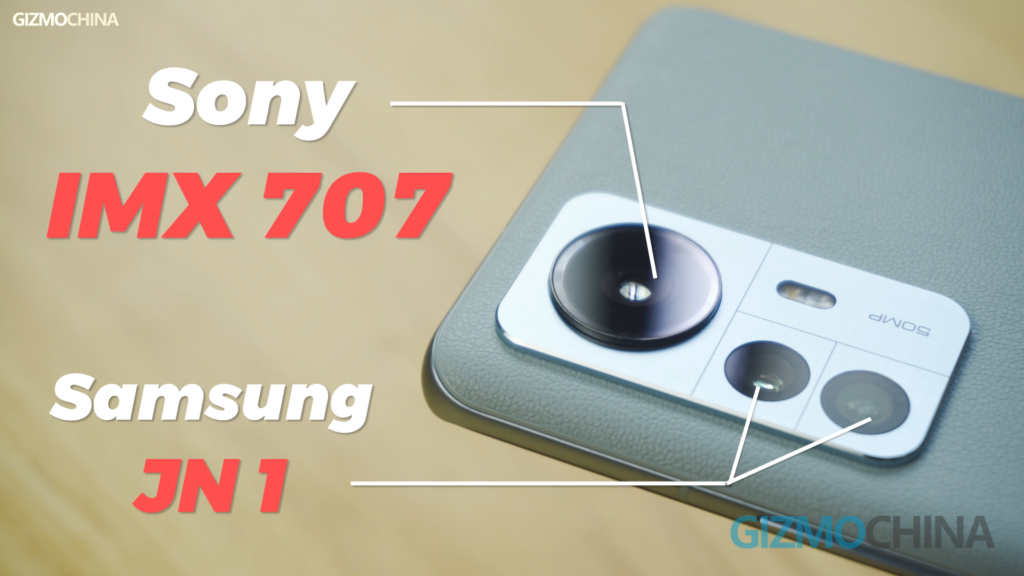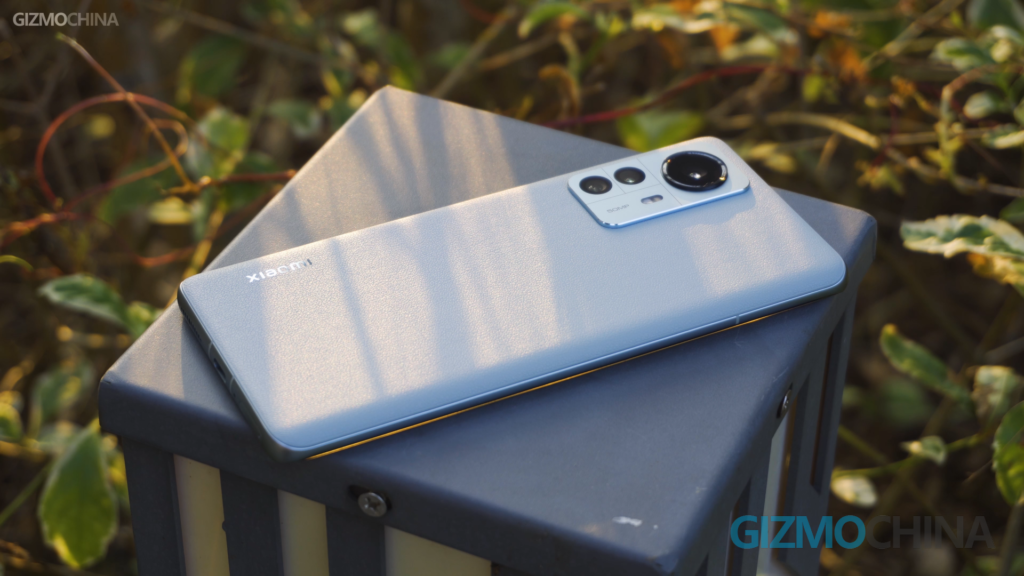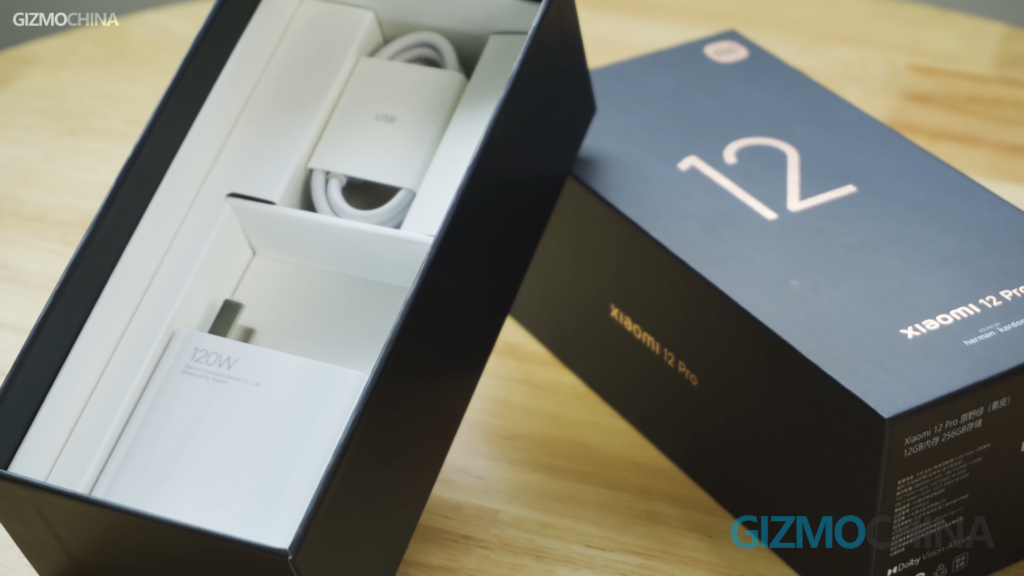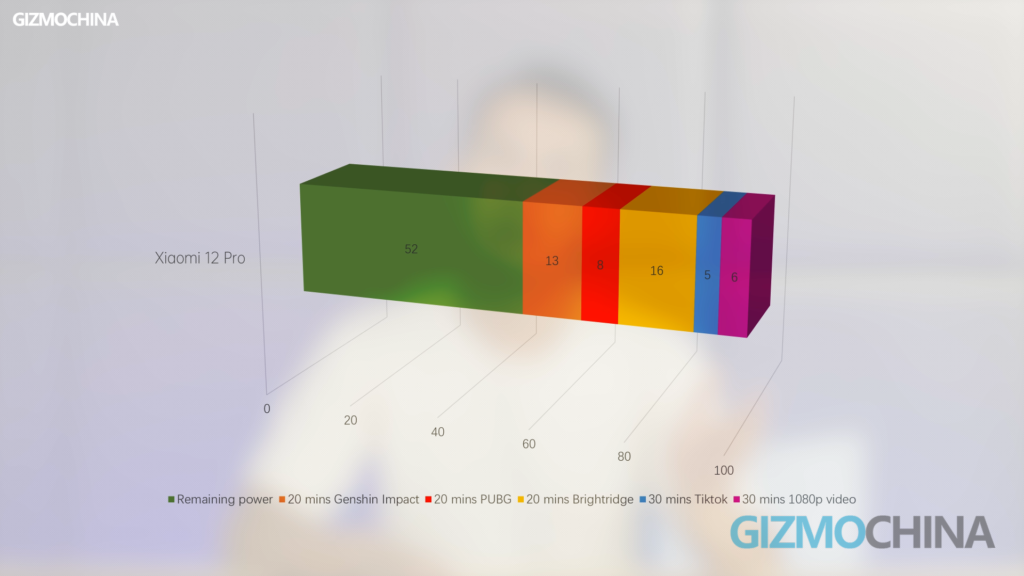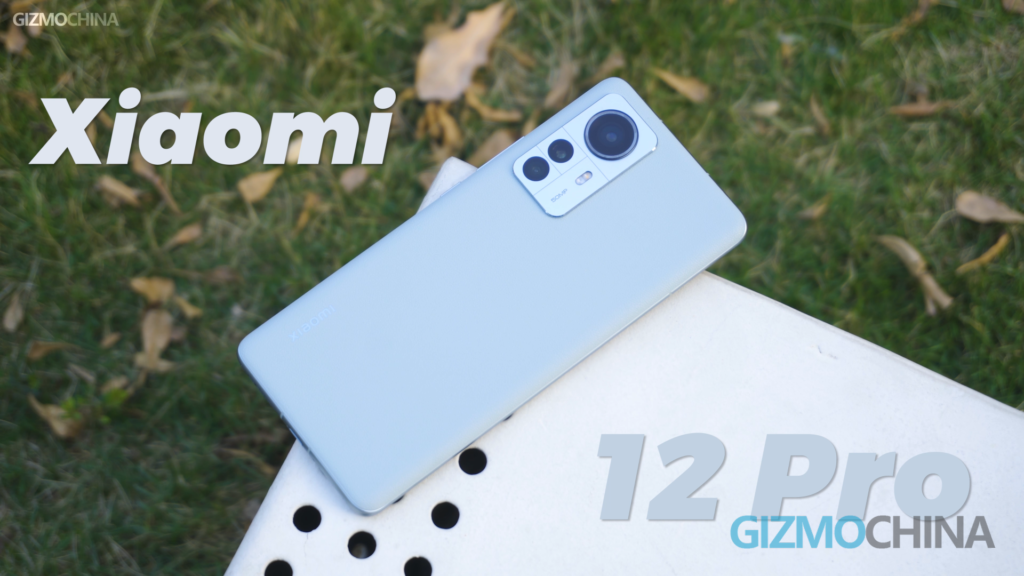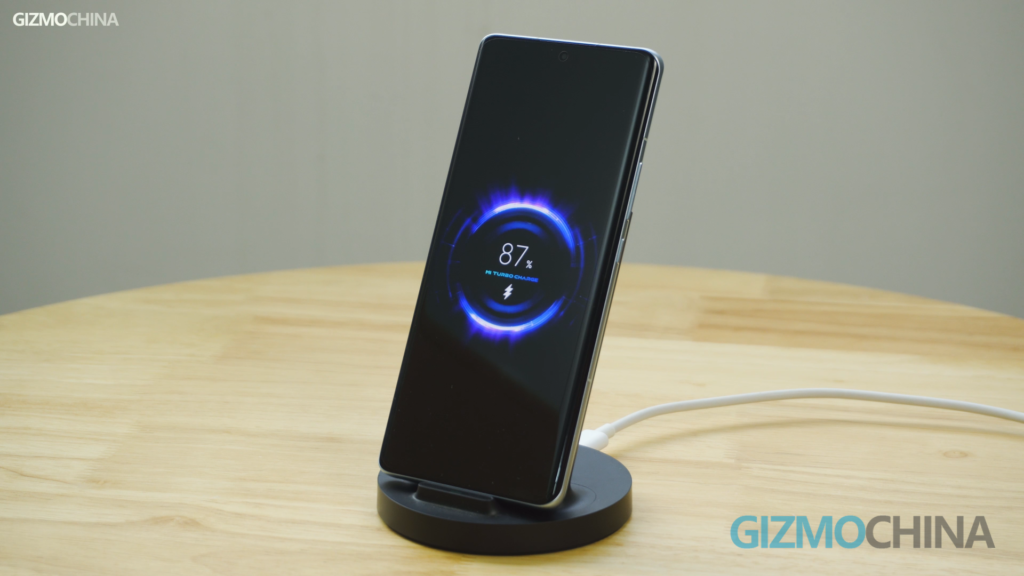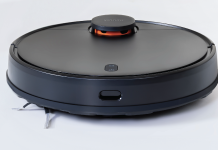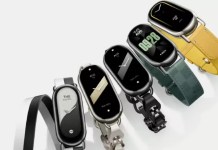This year’s Xiaomi 12 series is different from last year’s. The Xiaomi 12 has become a small screen flagship, while the Xiaomi 12 Pro is becoming more like an upgraded version of the Mi 11. The appearance also has a new change. Although Lei Jun said: we want to fully compete with the iPhone. but with the Xiaomi Civi looks similar to the Xiaomi 12 Pro can really make consumers spend more than $ 700 to buy it?
We bought the Xiaomi 12 Pro in green vegan leather, and to be honest, it looks pretty ordinary at first glance. It’s not the first time that a vegan leather back cover has been used on Xiaomi’s flagship phone.
Xiaomi 12 Pro Review: Design
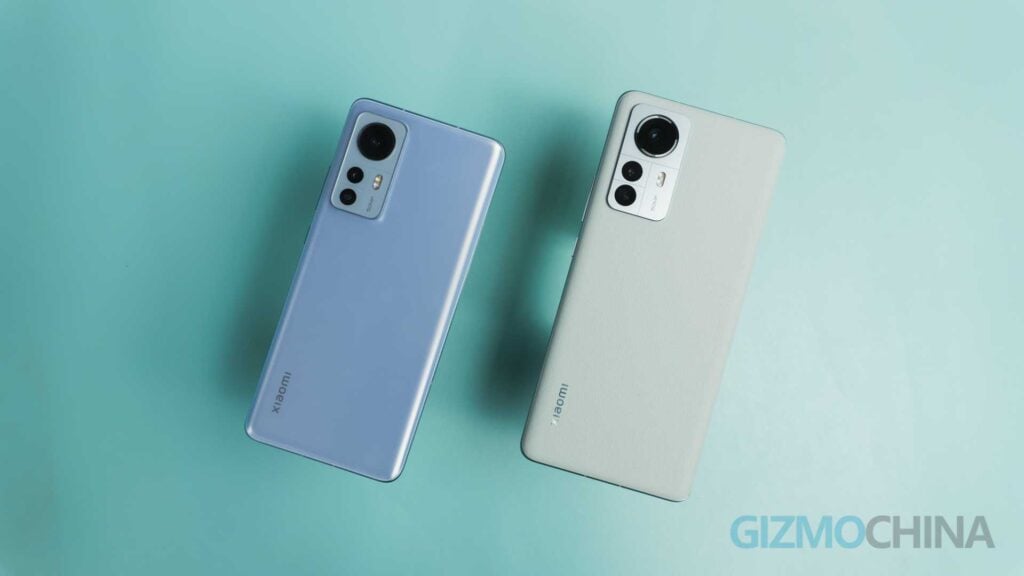 It doesn’t feel any different from the Mi 11. The Xiaomi logo area has become more simple. The rectangular lens module is similar to the Xiaomi Civi, with a large circle and several small circles. But the addition of a few lines across the design gives the lens module a more orderly feel.
It doesn’t feel any different from the Mi 11. The Xiaomi logo area has become more simple. The rectangular lens module is similar to the Xiaomi Civi, with a large circle and several small circles. But the addition of a few lines across the design gives the lens module a more orderly feel.
The new color scheme does look more refreshing, but the overall design really doesn’t have as much personality as the Mi 11. I don’t mean to say that the Xiaomi 12 Pro is ugly, it’s actually quite beautiful. It just lacks the kind of recognition that makes it easy to tell that it’s Xiaomi’s latest flagship. The Xiaomi 12 Pro has an improved frame design. Because of the more rounded frame and back curvature, plus the smaller size, it feels great to hold. NFC, IR blaster and X-axis linear motor are not missing either. Looking good, feeling good in the hand and full of features, I think the Xiaomi 12 Pro has done well enough in terms of design.
Xiaomi 12 Pro Review: Display
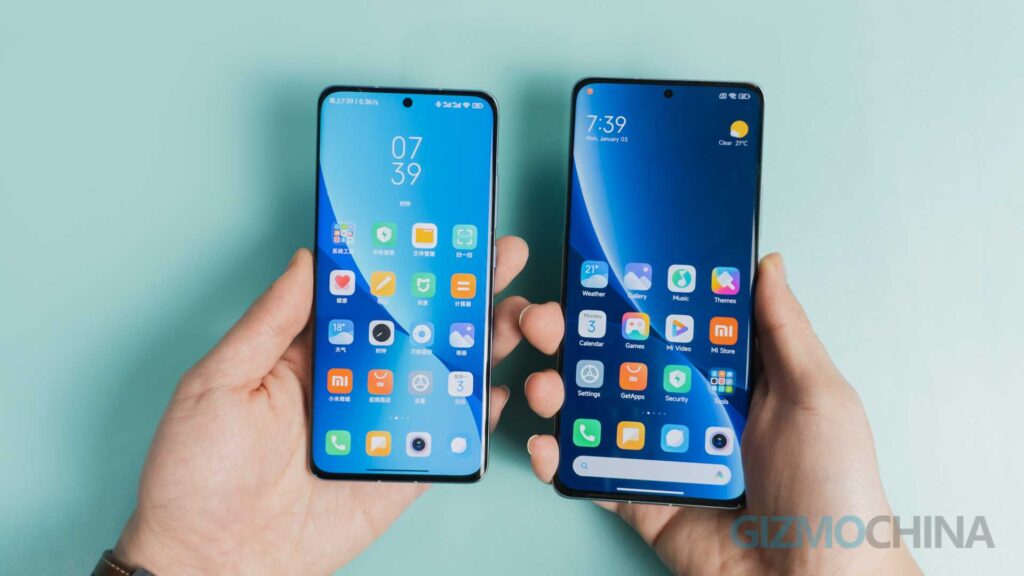
We all know that Mi 11 comes with a very good screen. the screen of Xiaomi 12 Pro is upgraded on top of that. Not only does it keep the 1440P resolution and 120Hz refresh rate, but it uses Samsung’s E5 material. Plus, Micro-Lens technology enables the Xiaomi 12 Pro to be more power-saving. Speaking of efficiency, Mi 12 Pro has another trick: the second generation LTPO technology.
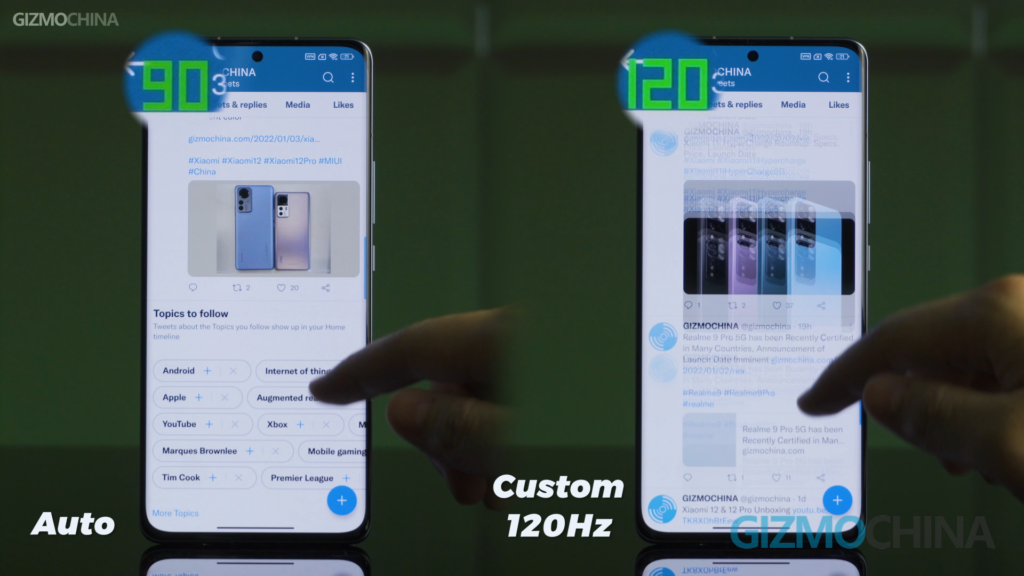 We all know that because of ProMotion technology, the 3,000mAh iPhone 13 Pro has achieved amazing battery life. And this second-generation LTPO is similar to ProMotion, which allows the Xiaomi 12 Pro’s screen refresh rate to switch adaptively between 1 and 120Hz. For example, if I swipe the screen, I can see that it can switch to a different refresh rate with the scroll speed. On many non-Xiaomi applications, although you can’t change the refresh rate with the swipe speed, you can switch back to 10Hz when you stop. watching videos can switch to 30 or 60Hz depending on your video, and when reading e-books you can theoretically go down to as low as 1Hz.
We all know that because of ProMotion technology, the 3,000mAh iPhone 13 Pro has achieved amazing battery life. And this second-generation LTPO is similar to ProMotion, which allows the Xiaomi 12 Pro’s screen refresh rate to switch adaptively between 1 and 120Hz. For example, if I swipe the screen, I can see that it can switch to a different refresh rate with the scroll speed. On many non-Xiaomi applications, although you can’t change the refresh rate with the swipe speed, you can switch back to 10Hz when you stop. watching videos can switch to 30 or 60Hz depending on your video, and when reading e-books you can theoretically go down to as low as 1Hz.
But in fact, it seems that Xiaomi is not optimized in place, repeated tests have failed to reach 1Hz. I suggest you go to the settings to change the Auto-refresh rate to custom 120Hz. Because some APP systems will lock in 90Hz or 60Hz, such as Twitter, and open the custom 120Hz to achieve the highest refresh rate. And the screen still drops to 10Hz when it stops.
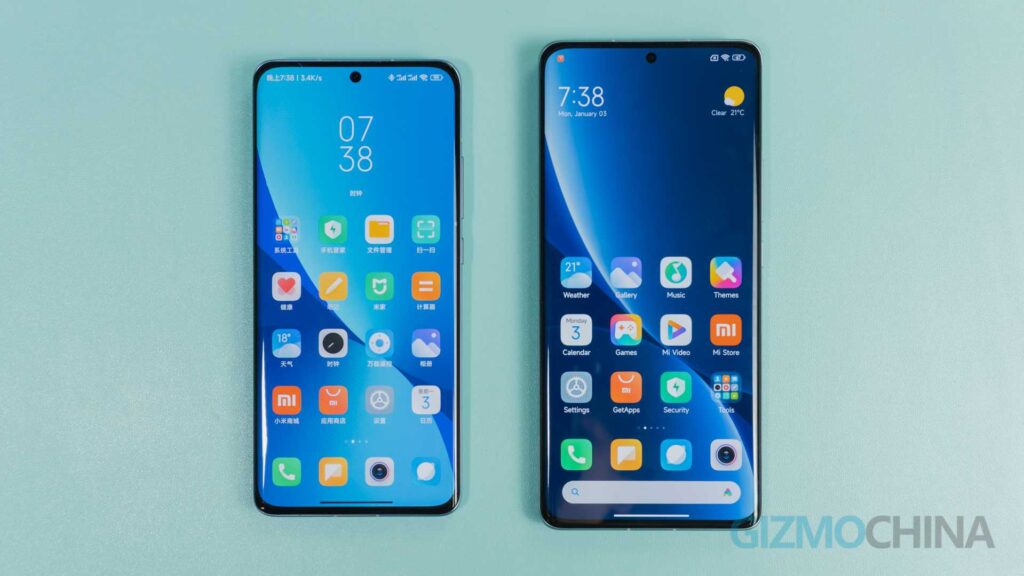 You may be confused why the first-generation LTPO like OPPO Find X3 did not feel as power-efficient as this? Because the first generation, no matter what you are doing, can only use 60Hz and 120Hz in two gears. And the second generation has six gears.
You may be confused why the first-generation LTPO like OPPO Find X3 did not feel as power-efficient as this? Because the first generation, no matter what you are doing, can only use 60Hz and 120Hz in two gears. And the second generation has six gears.
Also since the phone uses an ultra-thin fingerprint recognition module, the fingerprint recognition area is also at a very suitable location. The screen glass is also made of Corning Gorilla Victus. Although 2022 just started, I can promise that this screen should be one of the most powerful screens this year.
Xiaomi 12 Pro Review: Performance & Gaming
We should all know very well how the Snapdragon 8 Gen 1 is performing this year. So can Xiaomi tame this fire dragon? I must complain, this time Xiaomi has added Speed mode option in Developer options. If you want to play the game with the highest quality performance at full power, you need to turn on this option. Then turn on Performance mode, and then go to the game mode to turn on High quality.
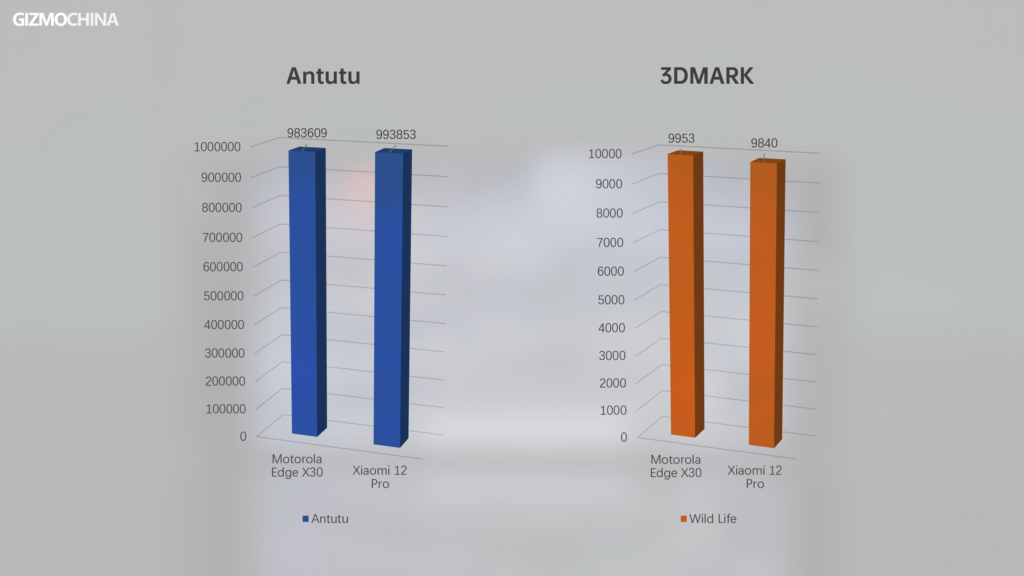 Antutu Bench scores are close to a million, 3DMARK 9840, Geekbench 5 single-core 1154, multi-core 3535.
Antutu Bench scores are close to a million, 3DMARK 9840, Geekbench 5 single-core 1154, multi-core 3535.
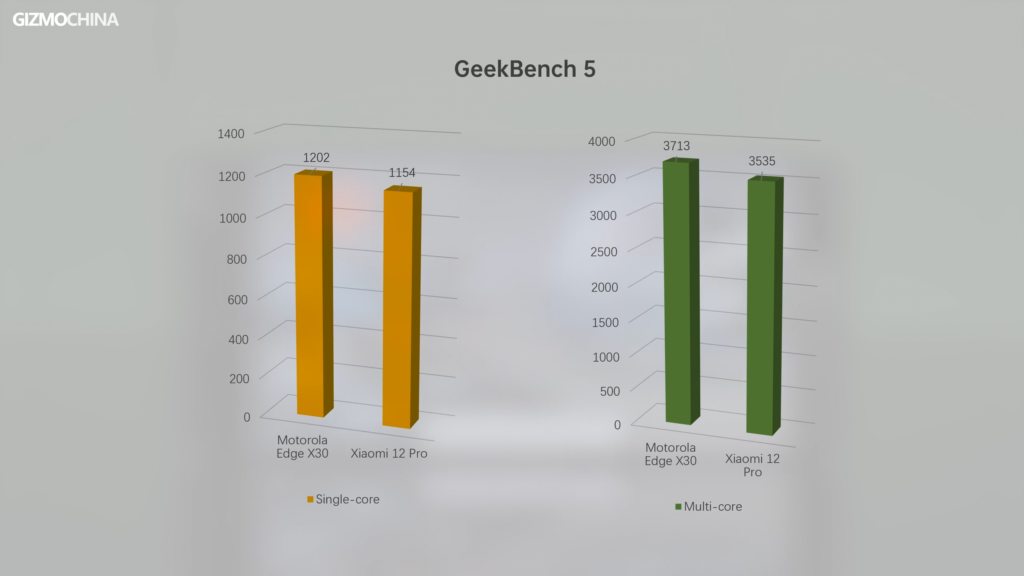 As much as we wanted to test the 3DMARK Stress Test, even with both Performance mode and Speed mode turned off, the Xiaomi 12 Pro was unable to complete the test in an indoor environment with a room temperature of 21 degrees Celsius. The body temperature at this point was around 52 degrees Celsius. This means that Xiaomi is not able to suppress the heat of this chip, and the temperature control is very strict.
As much as we wanted to test the 3DMARK Stress Test, even with both Performance mode and Speed mode turned off, the Xiaomi 12 Pro was unable to complete the test in an indoor environment with a room temperature of 21 degrees Celsius. The body temperature at this point was around 52 degrees Celsius. This means that Xiaomi is not able to suppress the heat of this chip, and the temperature control is very strict.
When it comes to game testing (check our video review for detailed gaming test), the PUBG HDR Graphics Extreme frame rate can be maintained at 60fps. there is no frequency reduction and the phone is not very hot. The Brightridge case is more interesting.
The full power output was locked at 50fps after a minute and then at 40fps after 4 minutes. Xiaomi 12 Pro didn’t hold up in the second half of the test, going back and forth between 40 and 25fps. Compared to the Edge X30, which has worse heat dissipation, the performance output is actually weaker. But the temperature is not as horribly high as the Edge X30.
The average power is only 7.6w, which is lower than both the Edge x30 and Mi 11. Xiaomi’s scheduling strategy for Genshin Impact is completely different from Motorola’s. Motorola tends to use the highest frequency and wait until it overheats before lowering the frequency. 12 Pro is to keep the temperature around 45 degrees Celsius to ensure you can be at a higher frame rate for a longer time.
I personally like Xiaomi’s gaming strategy better. At least my hands will feel a lot better. All in all, I find the Xiaomi 12 Pro’s gaming performance acceptable, especially since it’s a very big improvement over last year’s Mi 11.
Xiaomi 12 Pro Review: Cameras
The Xiaomi 12 Pro no longer uses Samsung’s sensor for its main camera but moves back to Sony’s latest 50MP IMX707 sensor.
Main Camera
This time the 12 Pro is a change from its previous tuning style, the colors are more intense and the contrast is higher than before. And like other brands, the sharpening algorithm has been enhanced. Yes, Xiaomi has finally learned to please the user in terms of color. The photos are finally not very bland. At night, the performance is similar to Mi 11 Ultra most of the time. The main improvement is in color reproduction. If the environment is dark, Mi 11 Ultra photos will be greenish, while Xiaomi 12 Pro will not. And the Night View mode algorithm has been greatly improved. The night mode wait time has been drastically reduced and the benefit is that the photos don’t get blurry. If you zoom in on a Mi 11 Ultra photo, you’ll see that 5 seconds of night mode has caused the photo to become blurry. And turning back to auto mode will also trigger the night view algorithm. The Xiaomi 12 Pro has a wait time of about two seconds even when the night view mode is on, so the photos are very clear. Of course, because the exposure time is shorter, it’s not as bright as the Mi 11 Ultra.
Ultra-Wide Camera
The Xiaomi 12 Pro’s Ultra-wide camera and 2x telephoto camera sensors are both 50MP JN1. Although the ultra-wide field of view is not as wide as the Mi 11 Ultra, the dynamic range is better, and the purple-fringing issue and edge image quality is improved from the hardware side. The ultra-wide-angle performs the same as the main camera most of the time as well. Auto mode performs about the same as Mi 11 Ultra at night. The difference is mainly in the algorithm of the night mode. You can see that the Xiaomi 12 Pro’s night mode is indeed a bit brighter than the auto mode, while the Mi 11 Ultra doesn’t seem to have any changes.
2X Telephoto
The 2x telephoto lens isn’t as impressive as I thought it would be. Even if the Mi 11 Ultra uses the main camera for cropping, the image quality performance is better than the 2x optical telephoto lens of the Xiaomi 12 Pro. Highlight control, noise control are not as good as Mi 11 Ultra. But the dynamic range is still better if HDR is successfully triggered. At night, the Xiao 12 Pro performed well in auto mode, and both phones performed similarly. But once night mode is turned on, both perform poorly. The Mi 11 Ultra has a poor algorithm, while the Xiaomi 12 Pro is easily blurred due to the lack of OIS.
Xiaomi 12 Pro has done a great job of optimizing the camera experience. For example, the new Focus tracking feature, which will automatically catch the focus if someone or a dog or cat appears in front of the camera. This is good news for many users who have children and pets. There is also the optimization of the shutter delay. You can look at the shutter speed in comparison to the Mi 11 Ultra, which is not in the same level anymore. There’s also an animation when switching between lenses now, instead of jumping straight to the camera. Stability has also been improved, like in this photo. The Mi 11 Ultra took three photos that were overexposed, while the Xiaomi 12 Pro encountered no such bugs.
Overall, the Xiaomi 12 Pro has surpassed the Mi 11 Ultra in many aspects and considering the good photo experience and the price difference, the Xiaomi 12 Pro’s photosystem is already tied with the Mi 11 Ultra for first place.
The video performance is relatively similar to the photo performance with a high contrast ratio. All three lenses are capable of shooting 4k 60fps video. You can also freely switch between the three lenses when recording 4k 30fps video. You can see that the dynamic range of the Xiaomi 12 Pro is not as good as that of the Mi 11 Ultra, and the green color is too intense and not as natural as that of the Mi 11 Ultra. In general, the Xiaomi 12 Pro’s video recording level is also top-notch, and there is not much difference between it and the Mi 11 Ultra.
You may not believe it when you hear it, but the Xiaomi 12 Pro actually comes with four-unit speakers. Two low-frequency units and two high-frequency units ensure that both vocals and instruments are well separated. Unfortunately, the speakers are in an awkward position. One is on the top and one is on the bottom, so no matter how you hold the phone you will always block one. Other than that, the speaker performance is probably one of the best I’ve ever used.
Xiaomi 12 Pro Review: Charging
This time Xiaomi launched the Surge P1 chip and first time equipped on Xiaomi 12 Pro. This is a charging chip that allows the phone to do 120W charging with a single cell. Previously, 120W charging could only exist in dual-cell phones, so the battery capacity of phones with 120W charging has not been able to break through 4500mAh. The 4600mAh Xiaomi 12 Pro proves that Xiaomi is ahead of the game when it comes to charging. Wireless charging can only do 50w for some reason, you can watch our MIX 4 Review for more details. of course, Xiaomi knows that 120W chargers are expensive, so they are included in the box.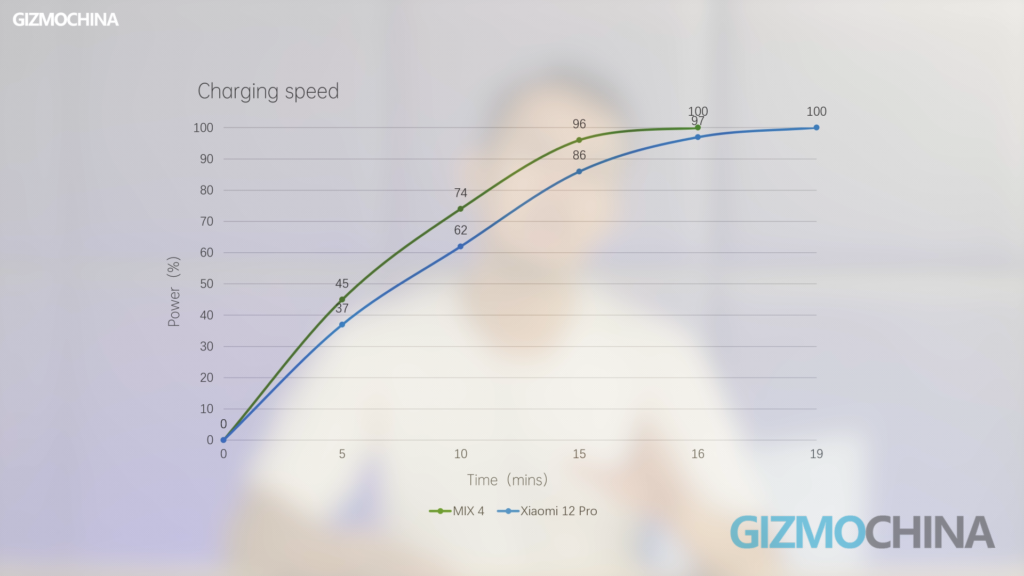
The actual charging speed is shown in the line graph. 5 minutes to 37% and 19 minutes to full. Although it will be a little slower than the dual-cell MIX4, but it is also very fast. In the battery life test, half an hour of 1080P online video and Tiktok consumed 6% and 5% of the power. The power consumption of the three games also looks very high. The first thing I want to say is that all three games are on Performance mode and Speed mode. Secondly, it is a 1440p 120Hz screen, which is really good but also very power-hungry. What’s more, perhaps you may think LTPO doesn’t save much power, but this is a test in a single scene, and the refresh rate is fixed. So the power saving effect of LTPO can not be reflected in our test. The actual use is certainly able to save more power than last year is Mi 11 series.
Finally, let’s talk about MIUI 13. Honestly, it doesn’t differ much from MIUI 12.5. Because it is mainly based on MIUI 12.5 to do the stability optimization. Yes, it has become much less buggy and laggy. All kinds of animations don’t drop frames anymore. Some widgets have been added to the desktop as well so that the desktop will not become so boring. The new feature can allow you to stream your content across Xiaomi devices. But it’s hasn’t been updated yet. The new system doesn’t really have much to show, so you can think of it as MIUI 12.8 to use it.
This year’s Xiaomi 12 Pro has become more stable. Although some areas have taken a step back, such as less 400mAh battery compared to Mi 11 Pro, smaller sensor size for the main camera, and less power for wireless charging. But its experience has improved. In this year, Xiaomi realized that paper specs do not mean a good phone experience. Only good optimization can make consumers satisfied. This is the phone that consumers want, a smooth, good-looking, and also easy to use Xiaomi flagship phone.
Well, that’s all there is to this review. We will soon make a photo comparison video between Xiaomi 12 Pro and iPhone 13 Pro. So stay tuned to that.

